There'll Always Be An England
Technical Note
For reasons unknown, blogspot.com sometimes replaces pictures on our blog with question marks. You can call up the picture by double-clicking on the question marks. You can also enlarge any picture by double-clicking on it.
Further Itinerary
June 28 Ferry from Newcastle to the Netherlands
June 29-July 2 Noordwijk aan Zee, Netherlands (between Amsterdam and The Hague)
July 3-5 Norg, Netherlands (Friesland)
July 6-8 Brussels, Belgium
July 9-13 Alsace/Lorraine, France
July 14-15 Stuttgart, Germany
July 16-17 Dijon, France
Southern England, June 8-16
We crossed the Channel by ferry and drove to East Grinstead, halfway between London and the south coast, to enjoy the generous hospitality of Tony and Judy Lane, whom we had met during Todd’s days in maritime affairs. The Lanes took us to Chartwell, Churchill’s country home, which has been lovingly preserved by the National Trust, primarily as it was in the 1930’s, Churchill’s “wilderness years,” when friends visited there to keep him abreast of the growing Nazi threat. The most memorable aspects for us were the beautiful gardens, the abundance of books (which had to be double stacked in some cases), and Churchill’s paintings, which fill the house and studio.
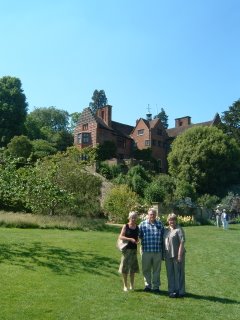
With the Lanes at Chartwell
For a rural English experience, we went with the Lanes to the “South of England Show”, which fell somewhere between a county and state fair in size and scope. Much was familiar—e.g., best-in-breed animal competitions with entries from Young Farmers Organization members—some less so, such as an organized tug-of-war contest, in this case among the YFA chapters. Another highlight was the cart driving competition, featuring “heavy horses” and bowler-hatted drivers from commercial firms. Charles and Camilla had been there the day before—what a pity we did not coordinate our calendars!
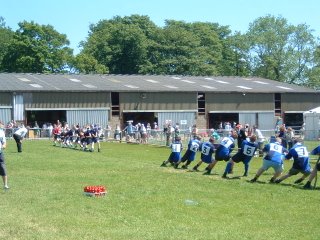
Tug-of-war competition
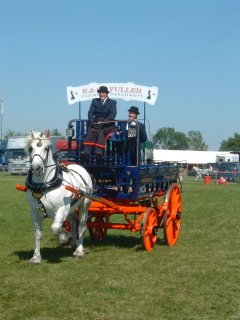
Cart driving competition
Leaving Valeriu, our trusty VW Passat, in East Grinstead, we took the train to London for our big city fix. London was hot (over 30 degrees two days and our Piccadilly Circus hotel had no air conditioning) and expensive (the prices seemed reasonable until we remembered we were paying in pounds, not dollars). However, we had a wonderful time, visiting new sites and old favorites. In the first category, we were particularly impressed by the recently opened Cabinet War Rooms, located underground near the Thames but only semi-protected from World War II bombs, plus an adjoining interactive museum devoted to Churchill. Taking the advice of Susan Cutter, we saw a hilarious revival of Michael Frayn’s comedy “Donkey’s Years”, which hopefully will NOT serve as a preview for Todd’s forthcoming Stanford and Fletcher reunions. We reached St. Paul’s Cathedral just before it closed to prepare for a thanksgiving service marking the Queen’s 80th birthday; apparently it was a dress rehearsal, for the Lord Mayor appeared in his ermine cape, to the delight of us camera-toting tourists.
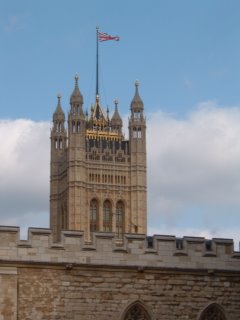
Tower of Parliament
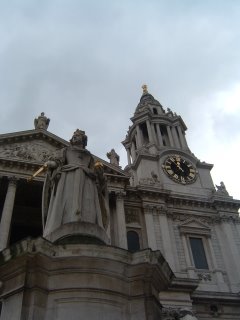
Queen Anne at St. Paul's
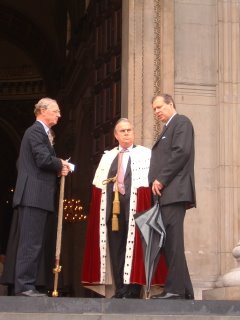
Lord Mayor of London
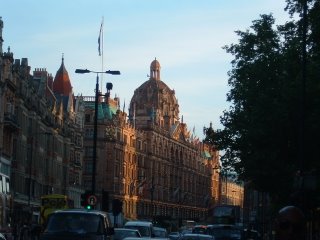
Harrod's
London food is excellent, but the exchange rate calls for caution in dining. Thanks to Michelin, we found Agni, a simple restaurant in Hammersmith with a very personable staff and the some of the best Indian food we remember eating. However, the culinary highlight was Drones in Belgravia, where we were the guests of John and Audrey Harper, American friends from Moldova, who are now living in London.
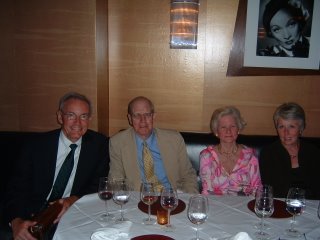
Dinner with the Harpers
Retrieving Valeriu, we drove to Salisbury, to see its remarkable cathedral, and to Stonehenge. perhaps the spookiest spot we have seen so far in Europe. The site commands a view of the surrounding countryside, including the avenue used to approach the site. The purpose of Stonehenge is unknown despite the attention lavished on it for more than a thousand years by the inhabitants of southern England.
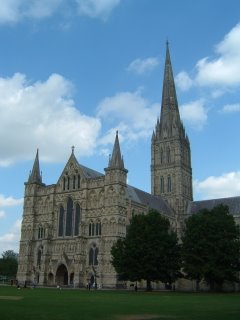
Salisbury Cathedral
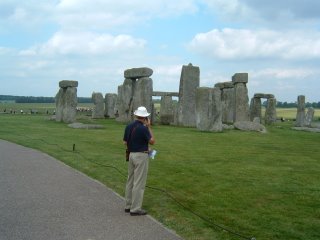
Stonehenge
We then continued on to Aldbourne, a picturesque village in Wiltshire, where we were the guests of Christopher and Joanna Hobart, friends from Costa Rica. The Hobarts took us to Lacock, a village little changed since Henry VIII seized it and the nunnery, which owned the village, from the church and sold them off to one of his supporters. The upper floors of the nunnery were substantially remodeled by its lay owners, but the cloister and adjoining rooms are so unspoiled that they appear in the Harry Potter movies. What higher accolade?

With the Hobarts at Lacock Abbey

Tulip tree at Lacock Abbey
A note for soccer fans: All England was bedecked with St. George’s flags (for you heathen: a white flag with a red cross), the emblem of England, and these banners outnumbered Union Jacks by perhaps 1000:1. They were so ubiquitous that we failed to take pictures of them, for we came to regard them as part of the landscape. This failing was only apparent when we reached Scotland, which failed to qualify for the World Cup, where nothing was displayed and the Chief Minister announced he was backing Trinidad and Tobago against the “Aulde Enemie” in their match.
